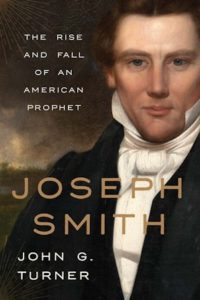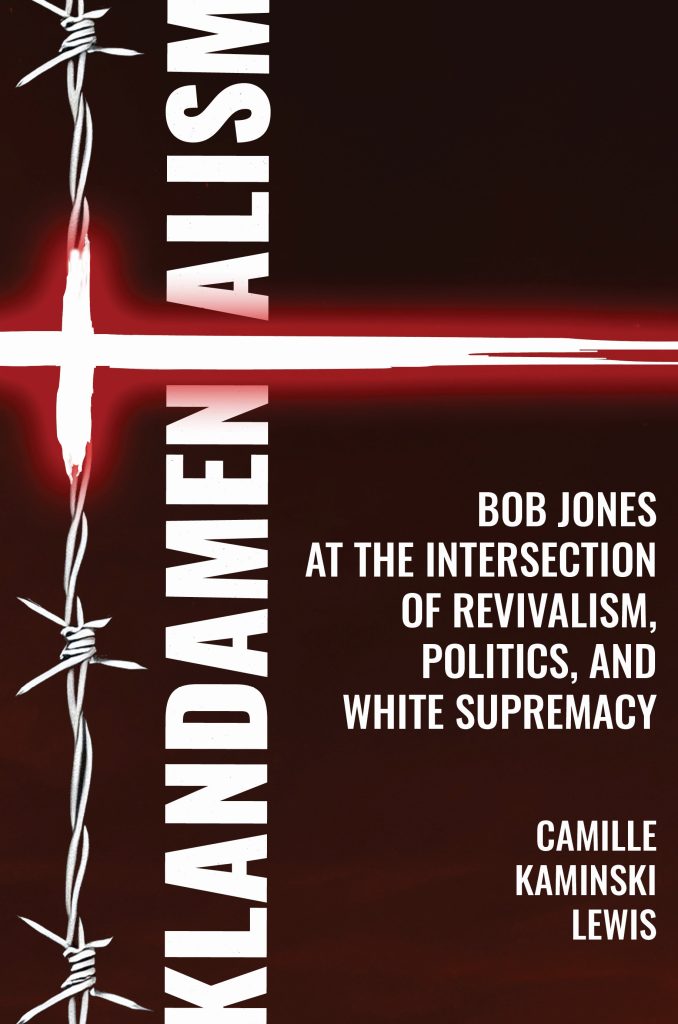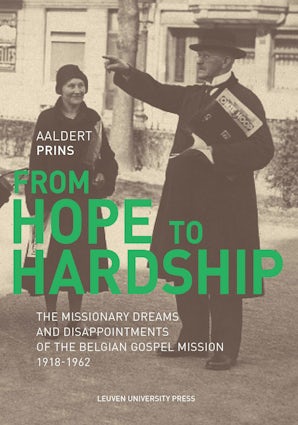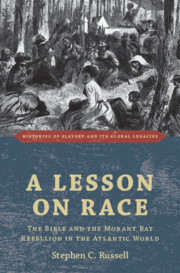Monthly Updates on Recent Books in the History of Christianity
To raise awareness of recent books in the history of Christianity, the editorial staff of Church History: Studies in Christianity and Culture highlights each month a list of 10-15 books in diverse periods and geographical regions that we hope will be of interest to our members. We include here below the 56th monthly list, chosen by our staff, with excerpts from the publishers’ blurbs.

John G. Turner, Joseph Smith: The Rise and Fall of an American Prophet. 2025
Joseph Smith Jr. (1805–1844) was one of the most successful and controversial religious leaders of nineteenth-century America, publishing the Book of Mormon and starting what would become the Church of Jesus Christ of Latter-day Saints. He built temples, founded a city-state in Illinois, ran for president, and married more than thirty women. This self-made prophet thrilled his followers with his grand vision of peace and unity, but his increasingly grandiose plans tested and sometimes shattered their faith.
In this vivid biography, John G. Turner presents Smith as a consummate religious entrepreneur and innovator, a man both flawed and compelling. He sold books, land, and merchandise. And he relentlessly advanced doctrines that tapped into anxieties about the nature and meaning of salvation, the validity of miracles, the timing of Christ’s second coming, and the persistence of human relationships for eternity. His teachings prompted people to gather into communities, evoking fierce opposition from those who saw those communities as theocratic threats to republicanism.
With insights from newly accessible diaries, church records, and transcripts of sermons, Turner illuminates Smith’s stunning trajectory, from his beginnings as an uneducated, impoverished farmhand to his ultimate fall at the hands of a murderous mob, revealing how he forged a religious tradition that has resonated with millions of people in the United States and beyond.
Stefania Tutino, 1626: A Year in the Life of the Roman Inquisition. 2025
This book examines all the activities carried out by the Roman Inquisition (including both the Roman and the local tribunals) in the year 1626. Its main argument is that the early seventeenth-century Roman Inquisition was not solely the expression of the most militant and repressive aspects of post-Reformation Catholicism. Rather, to understand the historical role the Holy Office played we need to see its development in terms of the tension between rigidity on the one hand and flexibility and complexity on the other. The mandate of the Holy Office was to defend and impose Catholic doctrine by identifying and punishing deviations: There could be absolutely no room for flexibility when it came to upholding Catholic theological rules. The world that Roman Inquisitors oversaw, by contrast, was characterized by a high degree of complexity. Roman Inquisitors did not ignore such complexity; rather, they acknowledged it, occasionally came to terms with it, and indeed absorbed it in some measure. But to what extent could the Holy Office relax its rigidity before it became unable to fulfill the functions for which it was created in the first place? At what point did an increased complexity hinder, rather than aid, the goal of monitoring and controlling the Catholic world? Having the opportunity to see all the activities of the Holy Office in one entire year makes the centrality of these questions easier to appreciate than if we just focused on a specific and necessarily limited subset of issues. Conversely, the granular analysis of those activities provided in this book gives a concrete sense of the ways in which the tension between flexibility and rigidity manifested.
John C. Solheid, Pedagogy of the Heart: Grammar, Philosophy, and the Christian Reader in Origen's Greek Homilies on the Psalms. 2025
This monograph presents a detailed and accessible analysis of the recently discovered Greek Homilies on the Psalms preached by Origen in the late 240’s CE. The author brings a discerning eye to the interplay of Hellenistic paideia and Origen’s exegetical and pedagogical aims of creating a Christian reading culture. In so doing, he also challenges the traditional dichotomy of school and church in the third century. The reader will discover Origen the teacher applying the critical tools of his time in order to cultivate the Christian reader in purity of heart.

Kati Curts, Assembling Religion: The Ford Motor Company and the Transformation of Religion in America. 2025
Henry Ford did not just mass produce cars. As a member of the Episcopal Church, reader of New Thought texts, believer in the “gospel of reincarnation,” mass marketer of antisemitic material, and employer who institutionalized a social gospel, Henry Ford’s contributions to American models of business were informed by and produced for an America he understood to be broadly Christian. Though Ford’s efforts at the head of the Ford Motor Company have commonly been understood as secular, Ford himself was explicit that his work in engineering and auto production was prophetic and meant to remake the world.
This religious history of Henry Ford and the Ford Motor Company repositions them within critical studies of religion, examining how Ford transformed American religious practice in the twentieth century. Drawing directly on documents from Ford’s archive, it examines Ford’s mass production methods and bureaucratic reforms as examples of prosperity gospel traditions, illuminating the ways manufacturing and technology intersect with American religious practice. Bridging American religious and industrial history, Assembling Religion offers a new and surprising way to understand Ford’s impact on culture, commerce, and the technology of labor.

Sami Luigi De Giosa and Nikolaos Vryzidis, eds. The Medieval Mediterranean between Islam and Christianity: Crosspollinations in Art, Architecture, and Material Culture. 2025
The American University in Cairo Press
The coexistence of Christianity and Islam in the medieval Mediterranean led to an interchange of knowledge in architecture and material culture that went well beyond religious and geographical boundaries. The use of Islamic objects in Christian contexts, the conversion of churches into mosques, and the mobility of craftsmen are only some manifestations of this process. From crosses found in mosques to European-Christian coins with pseudo-shahada inscriptions, medieval material culture is rich with visual evidence of the two faiths intermingling in both individual objects and monuments.
In this volume, thirteen international scholars explore various aspects of pan-Mediterranean Christian-Islamic encounters in material culture and art, from textiles to precious oils, and from metalwork to ceramics, covering most of the Mediterranean, as well as parts of its extended hinterland, from Spain and Italy to Egypt and Georgia.
Within this frame, one of the most relevant, yet underexplored lines of investigation is that of the “aesthetic space,” the notion that aesthetic pleasure transcends boundaries, paving the way to a cross-religious experience and appreciation. “Indeed, God is beautiful, and He loves beauty,” as mentioned in a Hadith narration, a universal cry of visual beauty that resonates with all cultures and civilizations.

Camille Kaminski Lewis, Klandamentalism: Bob Jones at the Intersection of Revivalism, Politics, and White Supremacy. 2025
Over a decade ago, I found several rhetorical “puzzles” sloppily hiding in my own church basement, and I’ve been putting them together piece-by-piece ever since. I have named this “puzzle”―or the rhetoric at the intersection of conservative politics, revivalism, and white male supremacy―“Klandamentalism.” The founder of the infamous Bob Jones University, Bob Jones, Sr., is my representative anecdote for Klandamentalism. With nearly a terabyte of archival ephemera, I document Bob Jones, Sr.’s original rhetoric as well as the context in which he preached. The story that unfolds explains how the Ku Klux Klan made so much sense to this son of an Alabama dirt farmer. My central argument is this: Klandamentalism starts with a forceful, egocentric singular personality and a small but secret cadre of young, white males who alone act upon their neighbors, employees, families, and nation to “bring them to God” to earn their own entry into Heaven. The words Bob Jones used in the 1920s to meld fundamentalism with the Klan parallel the white nationalistic rhetoric today. Whether the Klandamentalists are in the 1920s or 2020s, we can find better words to make a kinder, more equitable world.

Cinzia Recca and Francisco Precioso Izquierdo, eds. Elite Women in Early Modern Catholic Europe. 2025
Elite Women in Early Modern Catholic Europe offers a new look at early modern Catholic Europe through the lens of the diverse experiences of elite women, using a historiographical approach to analyze women’s roles through changing political, social, and cultural contexts.
Through novel practices and broad social networks, distinguished women assumed prominent roles, from queens and princesses, to aristocrats and great nobles, to women of faith and religion. As the Counter-Reformation and the transition toward Enlightenment ideology swept France, Spain, and Italy, literacy and education became more accessible to upper-class women, who began to create new traditions in place of the old ways that were falling short. The case studies in this volume, ranging from the seventeenth to early nineteenth centuries, uncover the ways in which women were developing leadership skills and preserving status through participation in historical processes that affected real estate, the Church, and the social and family organization across Catholic Europe.

Stuart Macdonald, Tradition and Tension: The Presbyterian Church in Canada, 1945-1985. 2025
McGill-Queen’s University Press
In 1945 the Presbyterian Church was one of Canada’s largest and most culturally influential churches. This impressive standing, in the aftermath of a depression and a global war and just twenty years after much of its membership had departed to form the United Church of Canada, was a mark of the Presbyterian Church’s resilience and resourcefulness. Yet the denomination’s greatest challenges lay in the decades that followed.
Tradition and Tension explores the history of the Presbyterian Church in Canada from 1945 to 1985. In the first half of this period, the church vigorously built new congregations in the suburbs, revitalized existing congregations, and took part in the religious revival of the 1950s. It opened its doors to new ethnic communities, updated its forms of worship, and revised its structures to permit the ordination of women. These renewal efforts were not without controversy within the church, however. Amid the cultural aftershocks of the 1960s, and as membership growth stalled, arguments about who was responsible for the church’s waning influence widened the rift between modernizers and traditionalists. Their common vision was lost.
The place of religion in Canadian society changed dramatically in the postwar period. Tradition and Tension examines how the Presbyterian Church consciously sought to reflect these changes – and how it was transformed and even overwhelmed by them.

Aaldert Prins, From Hope to Hardship: The Missionary Dreams and Disappointments of the Belgian Gospel Mission. 2025
From Hope to Hardship begins with the missionary quest of Ralph and Edith Norton, who assisted John Wilbur Chapman around the turn of the twentieth century at the height of his success as a ‘mass-evangelist’ in major US cities and worldwide. The book explores the origins and development of the Nortons’ campaign, and the interactions between a transatlantic faith mission and the broader landscape of Belgian Protestantism. Through a detailed account of the historical context, in a vivid narrative the author examines how the theological framework of first-wave fundamentalism was creatively applied in a transcultural missionary context, introducing the reader to the mission’s evangelistic strategies against the socio-political and religious background of post–World War I Belgium. In this comprehensive monograph, Aaldert Prins offers a well-documented and nuanced understanding of the mission’s successes, struggles, and leadership changes, making this book an essential read for anyone interested in the history of transnational evangelicalism and its missionary endeavors.

Stephen C. Russell, A Lesson on Race: The Bible and the Morant Bay Rebellion in the Atlantic World. 2025
Stephen C. Russell tells the story of the Bible's role in Jamaica's 1865 Morant Bay rebellion and the international debates about race relations then occupying the Atlantic world. With the conclusion of the American Civil War and arguments about reconstruction underway, the Morant Bay rebellion seemed to serve as a cautionary tale about race relations. Through an interdisciplinary lens, the book demonstrates how those participating in the rebellion, and those who discussed it afterward, conceptualized events that transpired in a small town in rural Jamaica as a crucial instance that laid bare universal truths about race that could be applied to America. Russell argues that biblical slogans were used to encode competing claims about race relations. Letters, sermons, newspaper editorials, and legal depositions reveal a world in the grips of racial upheaval as everyone turned their attention to Jamaica. Intimately and accessibly told, the story draws readers into the private and public lives of the rebellion's heroes and villains.
Finally, for staying up-to-date on the latest titles in all fields, we recommend regularly perusing New Books Network and its "New Books in Christian Studies” page. These pages are updated regularly.
